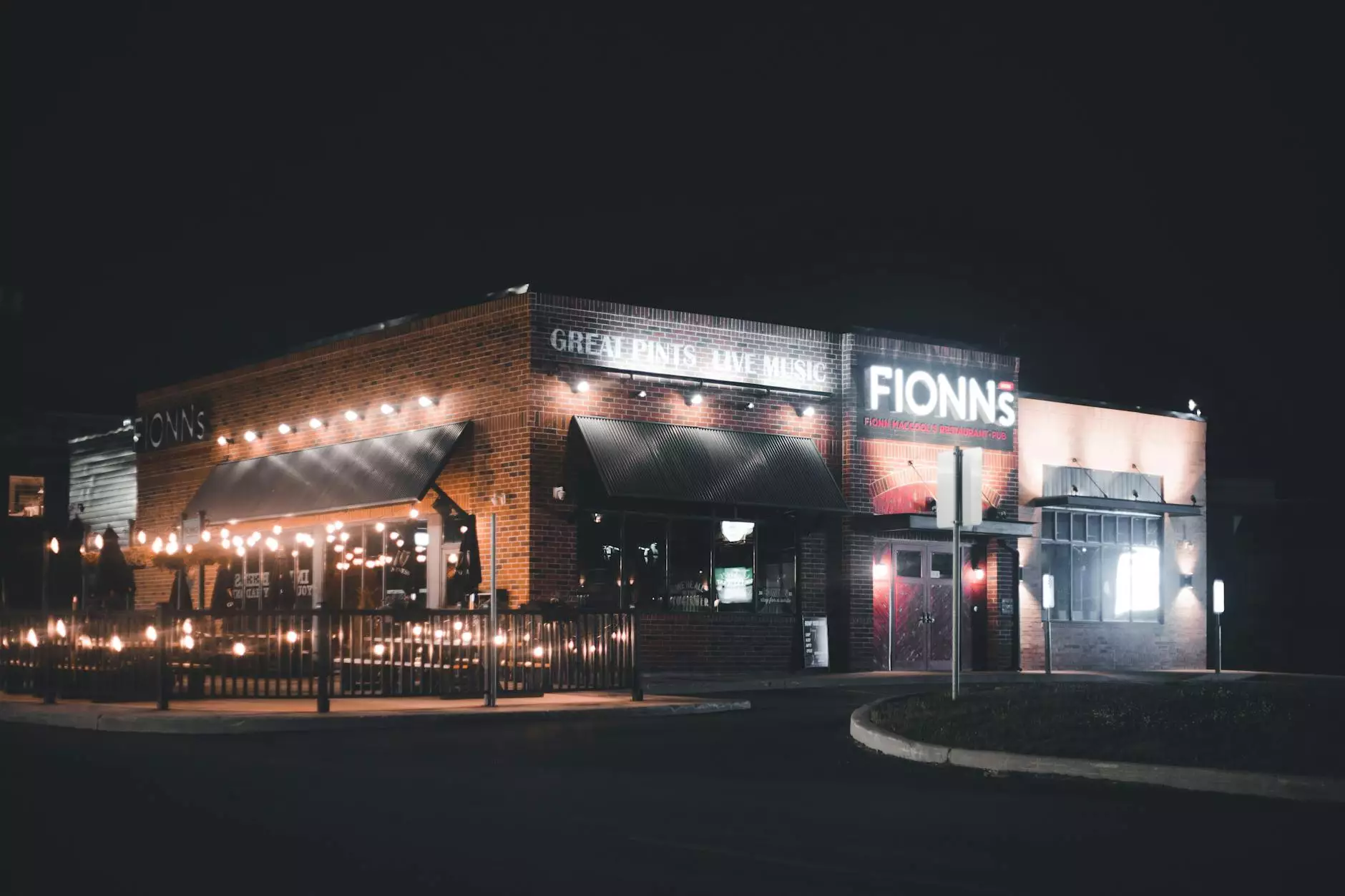Discovering the Beauty of Site-Specific Light Art

Site-specific light art is a captivating intersection of light, space, and artistic intention. Artists worldwide are creating immersive experiences that transform our perception of space through innovative use of light. This article delves into the multifaceted aspects of site-specific light art, illustrating its significance and influence in the art world today.
What is Site-Specific Light Art?
In essence, site-specific light art refers to artworks that are designed to exist in a particular location. The artists consider the environment, architecture, and cultural context, embedding their creations within the very fabric of the location. This approach enhances the audience's engagement, prompting viewers to interact with the art and the space in a profound manner.
Historical Context
Site-specific light art has roots in various art movements, notably in the late 20th century when artists began to explore the implications of space and environment in art. Pioneers like Dan Flavin utilized electric light to create installations that engaged directly with the architecture around them. These early works set the stage for a broader appreciation of how light can manipulate perception and influence the viewer's experience.
The Role of Light in Art
Light is not merely a tool in site-specific light art; it is a medium that shapes the artwork itself. Artists use both natural and artificial light to create various effects, inviting viewers to see familiar spaces in unprecedented ways. The transient nature of light means that these artworks often change with the time of day, season, and even the viewer's perspective, offering a dynamic art experience that evolves.
Forms of Site-Specific Light Art
Site-specific light art can take on many forms. Below are some key examples:
- Installations: These are large-scale artworks often created for specific architectural spaces, designed to interact with light in unique ways.
- Projections: Using projectors, artists can cast images or patterns onto surfaces, creating an ephemeral experience that transforms the environment.
- Light sculptures: These three-dimensional artworks incorporate light as an integral component, using materials that refract or reflect light to produce visual effects.
- Natural light installations: Some artists utilize sunlight creatively, harnessing its changing qualities to enhance the viewer's experience throughout the day.
The Significance of Site-Specific Light Art
The significance of site-specific light art lies in its ability to foster a deeper connection between the viewer, the artwork, and the environment. Here are a few noteworthy benefits:
1. Enhanced Interaction
Unlike traditional forms of art displayed in galleries, site-specific light art invites an interactive experience. Viewers become part of the artwork as their movements and presence contribute to the ongoing transformation of the piece. The interactivity encourages a more profound engagement with the art, prompting personal reflections and interpretations.
2. Contextual Relevance
These artworks often reflect the cultural and historical significance of the site, providing viewers with a deeper understanding of the location's narrative. By integrating local themes, stories, and sensations, site-specific light art can provoke thought and conversation about the environment around us.
3. Community Engagement
Site-specific installations often activate public spaces, fostering a sense of community and encouraging social interaction. They can transform ordinary sites into places of exploration and gathering, creating opportunities for communal experiences and fostering appreciation for public art.
Notable Examples of Site-Specific Light Art
Several renowned artists have made significant contributions to the field of site-specific light art. Here are a few examples that illustrate the range and impact of this art form:
- James Turrell: Known for his stunning light installations, Turrell’s works invite viewers to immerse themselves in the perception of light and space. His iconic "Roden Crater" project exemplifies the profound connection between light, landscape, and viewer experience.
- Olafur Eliasson: Eliasson’s installations often explore the relationship between nature and human perception. His work "The Weather Project" at the Tate Modern utilized light and mist to create an ethereal environment that engaged viewers' senses.
- Grimanesa Amoros: A significant figure in the field of site-specific light art, Amoros focuses on themes of light and community. Her installations often incorporate technology and interactive elements, inviting public participation and dialogue about identity and culture.
The Future of Site-Specific Light Art
As technology continues to evolve, the future of site-specific light art seems poised for even greater innovation. Here are some trends to watch:
1. Integration of Technology
With advancements in digital technology, artists have access to an increasingly wide array of tools for creating dynamic light art. Augmented reality (AR) and virtual reality (VR) are becoming popular methods for creating immersive environments that engage viewers on multiple sensory levels.
2. Sustainability in Art
As awareness of environmental issues grows, many artists are focusing on sustainability in their practices. This includes using energy-efficient lighting and materials, as well as creating installations that encourage discussions around ecological awareness and responsibility.
3. Expanding Public Art Initiatives
Public art initiatives are likely to see an increase in site-specific light art installations. As cities look to enhance public spaces, artists can contribute to urban revitalization through engaging and meaningful light art that draws the community together.
Conclusion
In summary, site-specific light art is a captivating and dynamic art form that transcends traditional boundaries, inviting interaction, reflection, and a deeper connection to the spaces we inhabit. As artists like Grimanesa Amoros and others continue to innovate, the possibilities for this genre are boundless. Whether through immersive installations, light sculptures, or projections, this art form has the power to transform everyday environments into extraordinary experiences.
Embracing the ever-evolving nature of light art opens the door for communities and individuals to engage with art in ways that are personal, communal, and reflective of our shared humanity.









